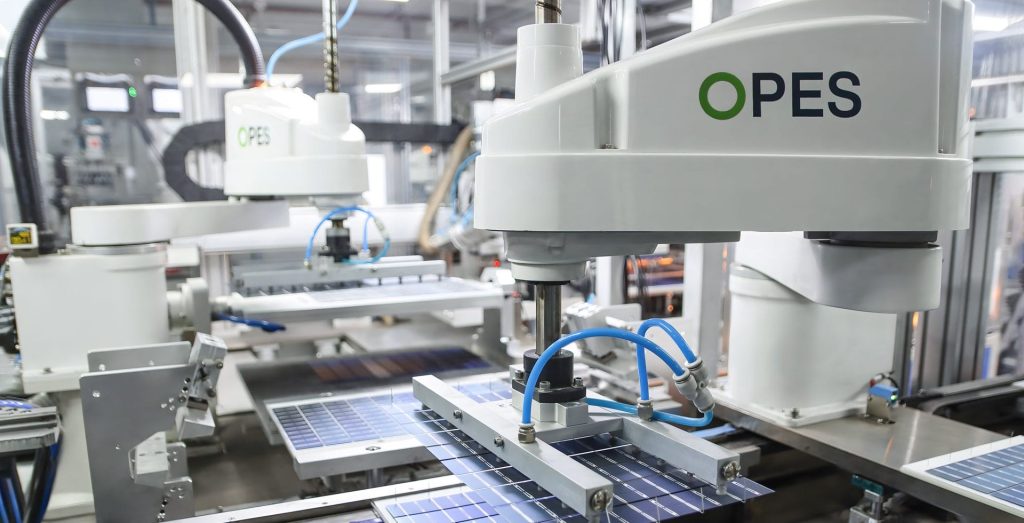• OPES Solar Mobility opens a 12,000 m² production facility near Leipzig for flexible solar panels designed for commercial and recreational vehicles.
• The technology is expected to cut vehicle CO₂ emissions by 10–15% and extend battery life for electric and hybrid fleets.
• The factory will supply modules to over 15 partners across Europe, Africa, and South America, creating 120 jobs in Saxony’s growing clean-tech corridor.
Vehicle-integrated solar manufacturing begins in Germany
In Zwenkau, near Leipzig, OPES Solar Mobility has opened Europe’s first production facility dedicated to flexible solar panels for vehicles — marking a new phase in the region’s transition toward low-emission mobility. The 12,000-square-metre site combines advanced manufacturing systems with proprietary photovoltaic technology, designed to integrate seamlessly into buses, trucks, trailers, and camper vans.
The new factory will employ 120 people and forms part of Saxony’s broader effort to position itself as a hub for renewable and electric mobility innovation. The panels, tailored for both diesel and electric vehicles, generate power for onboard systems, improving efficiency and extending range.
Saxony’s Minister President Michael Kretschmer described the launch as evidence of the region’s industrial and technological strength, crediting the partnership between science and entrepreneurship as key to retaining economic value while tackling global climate challenges.
Expanding market for solar-powered fleets
OPES plans to supply its first modules to more than 15 clients across Europe, Africa, and South America. Early adopters include major commercial vehicle manufacturers and logistics firms seeking to reduce operating costs and decarbonize their fleets.
Pavel Kuch of MAN Truck & Bus CZ said the collaboration offers “a practical route to greater energy efficiency” by allowing buses and trucks to generate part of their own energy. He added that vehicle-integrated photovoltaics could enhance battery performance and lower fuel consumption — a growing priority as the EU’s heavy-duty vehicle emissions regulations tighten.
Research partners expect the addressable market to be significant. Dr. Martin Heinrich from the Fraunhofer Institute for Solar Energy Systems (ISE) estimated the technical potential for solar modules on commercial vehicles in the EU at around 70 gigawatts, equivalent to roughly six million trucks and 30 million vans. Average carbon reductions could reach 10–15% per vehicle depending on use patterns and regional sunlight availability.
German innovation drives global interest
The Zwenkau plant follows years of joint R&D between OPES and leading research institutions such as the Fraunhofer Center for Silicon Photovoltaics (CSP) and Fraunhofer ISE. The company’s patented Matrix architecture and purpose-built machinery have been engineered for durability under vibration, temperature changes, and continuous movement — challenges that conventional stationary PV modules rarely face.
RELATED ARTICLE: Italy’s Enel to Build Solar PV Cell & Panel Factory in U.S.
Robert Händel, CEO of OPES Solar Mobility, said the company’s design “enables reliable energy generation under real-world driving conditions” and achieves higher yields than conventional systems. The brick-like configuration of interconnected solar cells ensures that even when parts of a module are shaded by roof structures or dirt, other cells continue generating power, minimizing typical shading losses.


The approach could allow commercial vehicles to become small, mobile power plants — reducing grid dependence for refrigeration, lighting, and communication systems. In electric fleets, the panels can supplement the battery charge, extending operational range and decreasing charging frequency.
Industrial implications and climate alignment
The opening strengthens Germany’s clean-technology manufacturing base at a time when the EU is investing heavily in strategic autonomy for renewable energy supply chains. By pairing advanced materials with modular, exportable technology, OPES Solar Mobility is positioning itself at the intersection of Europe’s green industrial policy and the global transport transition.
For investors and policymakers, the initiative represents a convergence of industrial policy, innovation, and emissions reduction. As fleet operators across regions seek to comply with tightening carbon regulations, the technology offers both a compliance tool and a cost-saving advantage.
The new Zwenkau facility highlights Germany’s continuing push to link renewable manufacturing with real-economy applications — a practical model for how industrial regions can maintain competitiveness while advancing decarbonization goals.
Follow ESG News on LinkedIn

